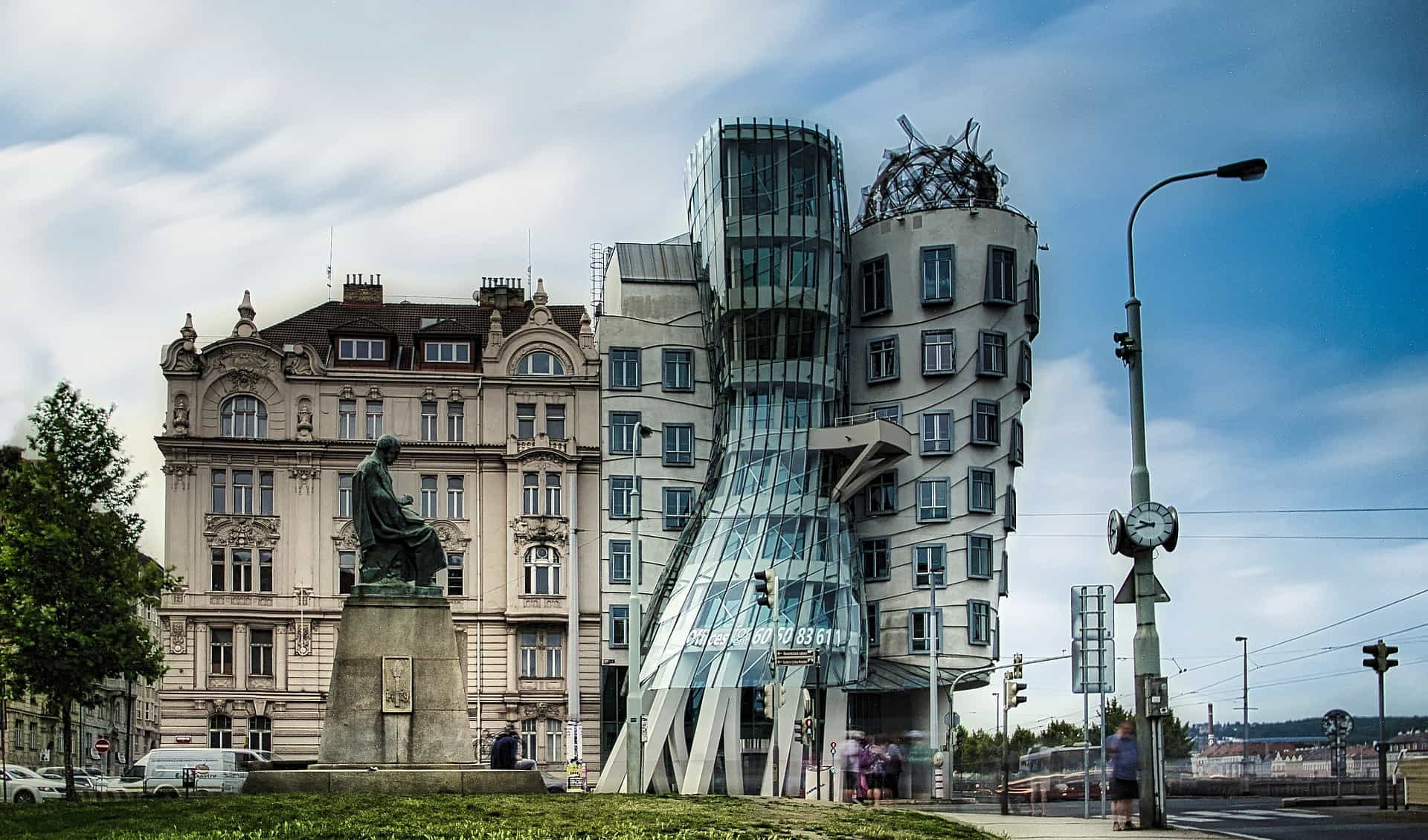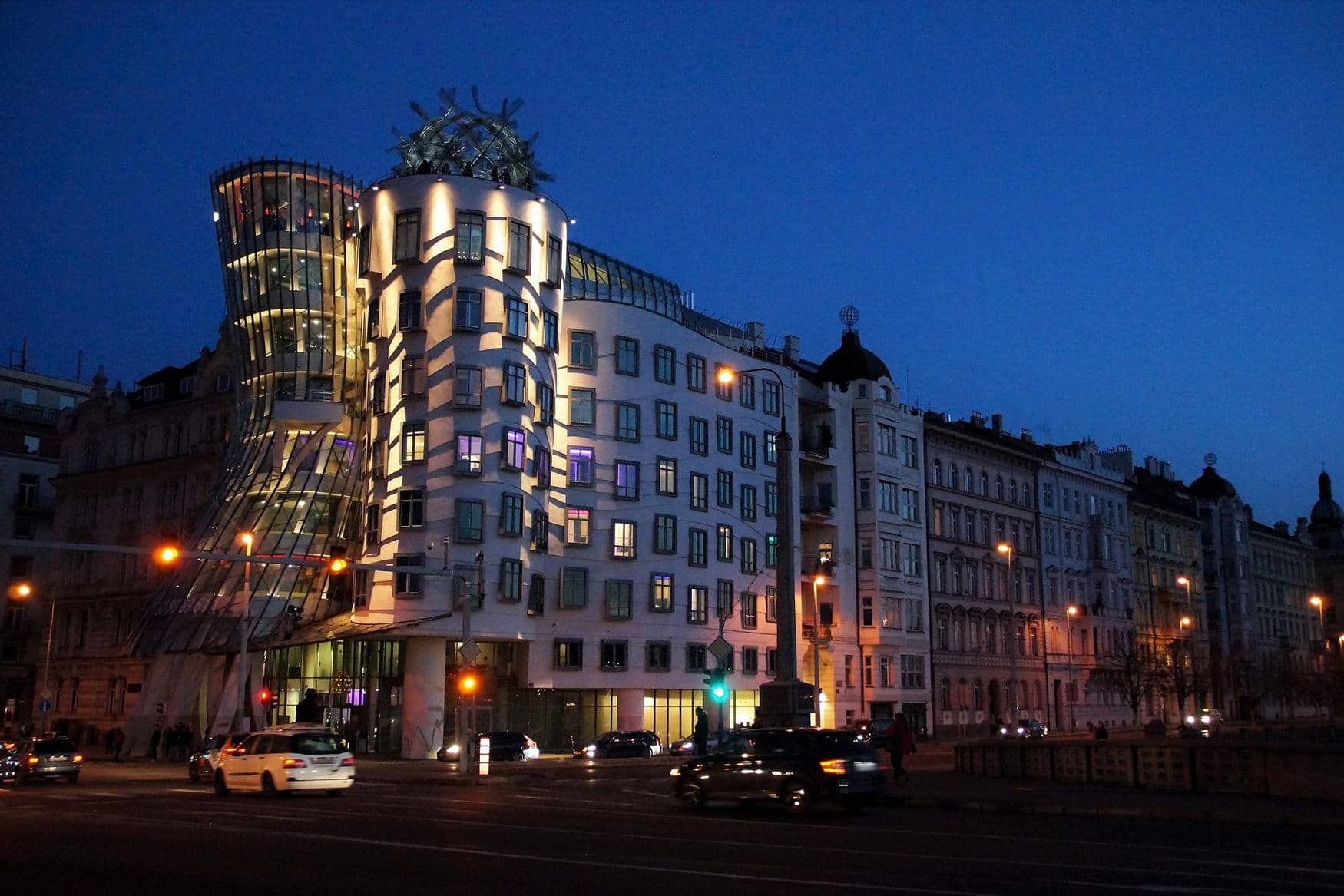Set against Prague’s historical architectural canvas backdrop, the Dancing House stands out with a playful dynamism rarely seen in urban skylines. It's a visual metaphor of dance, aptly nicknamed after the famous dancing duo Fred Astaire and Ginger Rogers. The building’s undulating curves and counter-intuitive angles evoke the image of a couple locked in an intimate twirl, providing a striking contrast to the traditional Baroque, Gothic, and Art Nouveau buildings for which Prague is renowned.
Designed by architects Frank Gehry and Vlado Milunić, this iconic structure signals the city's embrace of modernity and recovery from the austere communist era. For the family seeking a blend of educational and exciting experiences, the Dancing House discusses architecture's capability to express time, culture, and creativity. Not merely a feast for the eyes, the building also houses an art gallery and a restaurant with panoramic city views and is a shining example of innovative design.
Contents
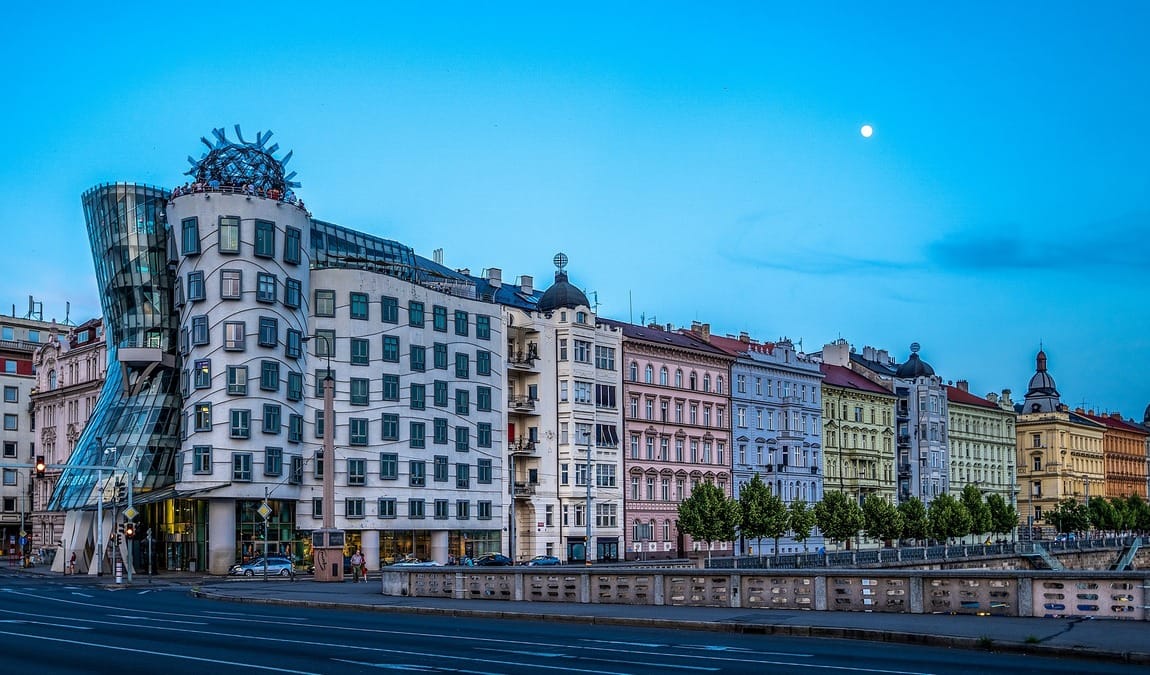 Photo: pixabay.com
Photo: pixabay.com
Venturing to the Dancing House offers a rich opportunity to instill an appreciation for contemporary art and architecture in young minds. Families visiting the city can create lasting memories as they explore this marvel, nestled on the banks of the Vltava River, and learn about the inspiring collaboration that brought this bold design to life. With each playful twist and unexpected turn in its design, the Dancing House invites onlookers and visitors alike into a world where imagination takes physical form.
What is Dancing House Known for?
The Dancing House is unlike any other building in Prague. It is situated on Prague's scenic Rašín Embankment, renowned for its distinctive architecture. Designed by Frank Gehry and Vlado Milunić, this deconstructivist building fascinates families with its dynamic appearance, reminiscent of a pair of dancers, which earned it the nickname — Fred and Ginger.
Key Attractions:
- Unique Design: Its whimsical curves and dissimilar materials break the mold of traditional architectural forms.
- Cultural Hub houses a gallery, a restaurant with stunning city views, and office spaces.
- Photogenic Spot: A must-visit for families to capture memorable pictures against an iconic backdrop.
It stands as a testament to innovative design and a symbol of the city's modern spirit amidst historical grandeur.
Why It Might Be Interesting for Kids
.jpg) Photo: facebook.com/galerietancicidum
Photo: facebook.com/galerietancicidum
Children often have boundless energy and a penchant for the extraordinary, making the Dancing House in Prague's whimsical architecture a delightful stop for families. Here's why the dancing house is worth visiting with kids:
- Inspiring Imagination: Kids are often captivated by the building's playful shape.
- Engaging: The rooftop access allows visitors to see Prague from a different vantage point, making it an exciting experience for the entire family.
- Educational Value: For older children, the history of the Dancing House's location — an area rebuilt after being destroyed during WWII — provides a tangible lesson in history and resilience. The architecture itself introduces modern artistic movements, contrasting with the classic styles they may see elsewhere.
This attraction is best suited for children who are old enough to appreciate the visual playfulness of the structure — that typically starts around the age of six. However, the building's allure isn't just limited to children; it captures the imagination of all ages, making it a compelling visit for every family member.
Lego Museum and Kingdom of Railways are just 1 km from the building. Be sure to plan a visit to these places with children.
History of the Prague Dancing House
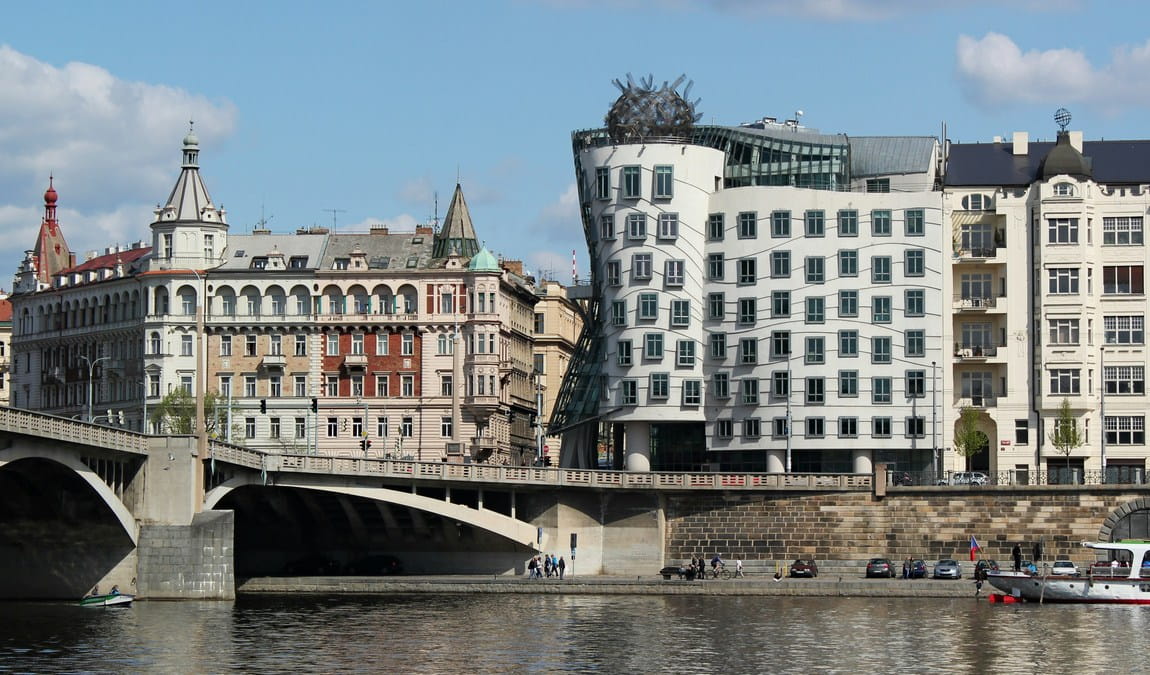 Photo: unsplash.com
Photo: unsplash.com
The Dancing House marks an exceptional blend of architectural styles and historical narratives, encompassing its unique formation, cultural significance, and contemporary value.
Inception and Development
The story of the Dancing House begins in 1992 when Czech president Václav Havel collaborated with architects Vlado Milunić and Frank Gehry to conceive a striking piece of modern architecture on a site once devastated by WWII bombings. Construction occurred between 1992 and 1996, transforming a lonely gap in Prague’s skyline into an iconic building. The innovative design reflects the dynamic energy of the Velvet Revolution and Czechoslovakia's transition away from a Communist regime.
Architectural Significance
Embracing a deconstructivist style, the Dancing House distinguishes itself from the surrounding Art Nouveau, Gothic, Baroque, and Romanesque buildings. The design metaphorically depicts a dancing couple, hence its nickname, Fred and Ginger. This addition to the "ten centuries of architecture" visible in Prague signifies a leap into modern architectural expression, diverging from the New Baroque norm to signal a new cultural era.
Political and Cultural Impact
Beyond its aesthetic appeal, the Dancing House symbolizes optimism and progress following the 1989 Velvet Revolution. It encapsulates President Václav Havel's vision for a post-communist Czech Republic that embraced creativity and cultural freedom. This building is not merely a structure but a cultural beacon signaling a move towards openness and democracy.
Renovations and Modern Usage
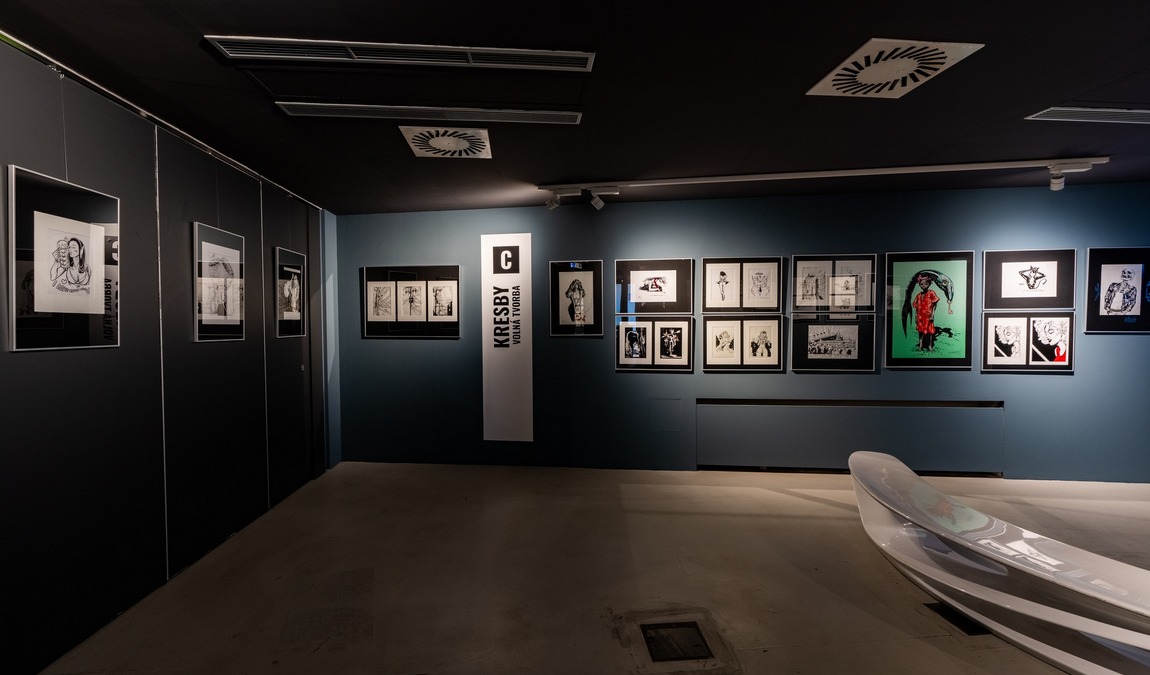 Photo: facebook.com/galerietancicidum
Photo: facebook.com/galerietancicidum
With its completion, the Dancing House swiftly turned into a cultural center, housing a gallery, a luxury restaurant, and a top-floor bar offering panoramic city views. In 2016, the structure expanded its purpose by introducing the Dance House Hotel, enhancing its facilities to include hospitality services. Visitors can enjoy diverse offerings during the building's opening hours, adding to Prague’s touristic and leisure landscape.
The Dancing House remains an expressive piece of the Czech Republic’s cultural tapestry, inviting families and visitors of all ages to explore its galleries, dine in its high-end restaurant, or simply marvel at its architectural splendor.
Design and Architecture
The Dancing House, or tančící dům, stands as an exquisite example of deconstructivist architecture, merging a daring, organic design.
Conceptual Inspiration
The Dancing House's conceptual roots are entwined with the motion of dancing partners. Its creators, architects Frank Gehry and Vlado Milunic, drew inspiration from the dynamic figures of Fred Astaire and Ginger Rogers, embodying their elegant dance in this unconventional edifice. This inspiration manifests in the contrasting yet harmonious elements of the building, reflective of the balance of yin and yang.
Exterior and Interior Features
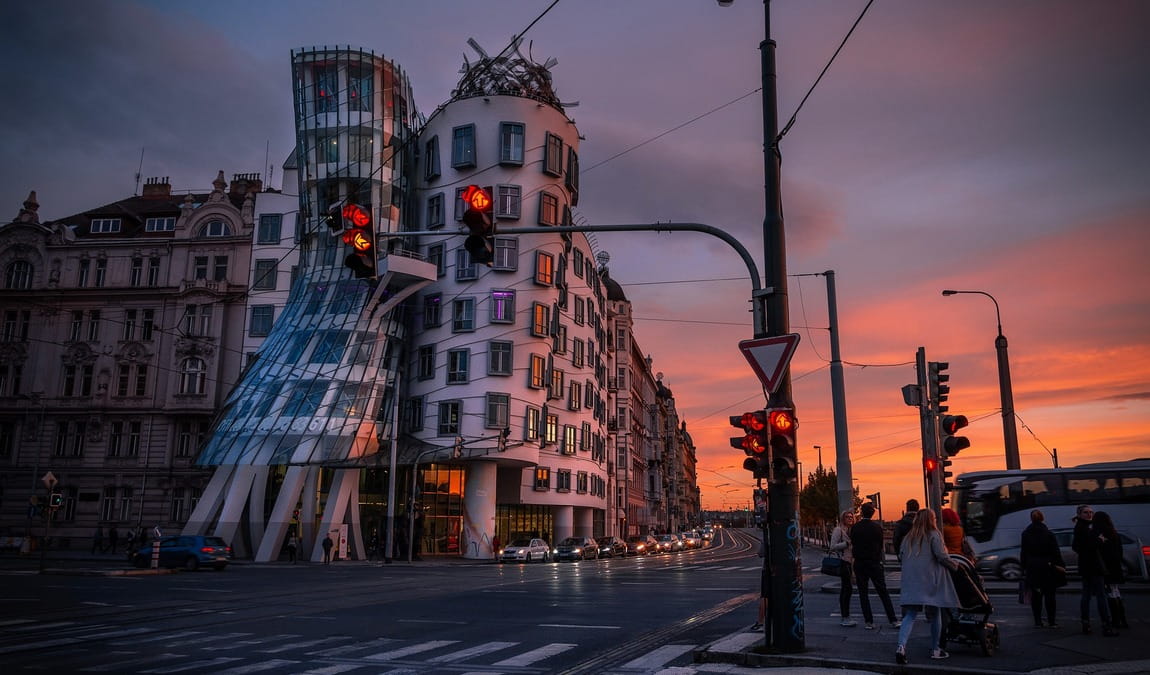 Photo: pixabay.com
Photo: pixabay.com
The building's exterior presents a striking visual narrative. Dancing House has two main parts. One tower is made of glass and is often referred to as "Ginger," seeming to lean into the other tower, "Fred," constructed of concrete. Combining these distinct parts fuels the sense of movement inherent in the design and is quintessential to its character. The glass bar connecting the two Dancing House pillars epitomizes modern architecture.
Internally, the Dancing House doesn't shy away from the movement theme, as each floor differs slightly in layout, driven by the fluidity of the dance. Famed British architect Eva Jiřičná adorned the interiors with a sense of retro-modernity. These spaces accommodate offices but also feature The Ginger & Fred Restaurant located on the seventh floor and a glass bar on the eighth floor.
Structural Elements
The structural elements of the Dancing House defy traditional expectations. It combines 99 different shaped panels that mirror the complex harmony of a dancer's poise and stance. The glass tower twists to a crown at its top, resembling a swirling motion. In contrast, the concrete tower supports it with its robust and grounded figure, composed of aligning pillars and support beams as a more static counterpart.
Though widely celebrated now, the Dancing House was not without its controversies. Some argued that this post-modern and deconstructivist piece intruded upon Prague's historic skyline. Others applauded Frank Gehry for injecting a fresh burst of contemporary style into the cityscape, highlighting the evolutionary journey of architecture through bold modern building expressions.
Best Time to Visit
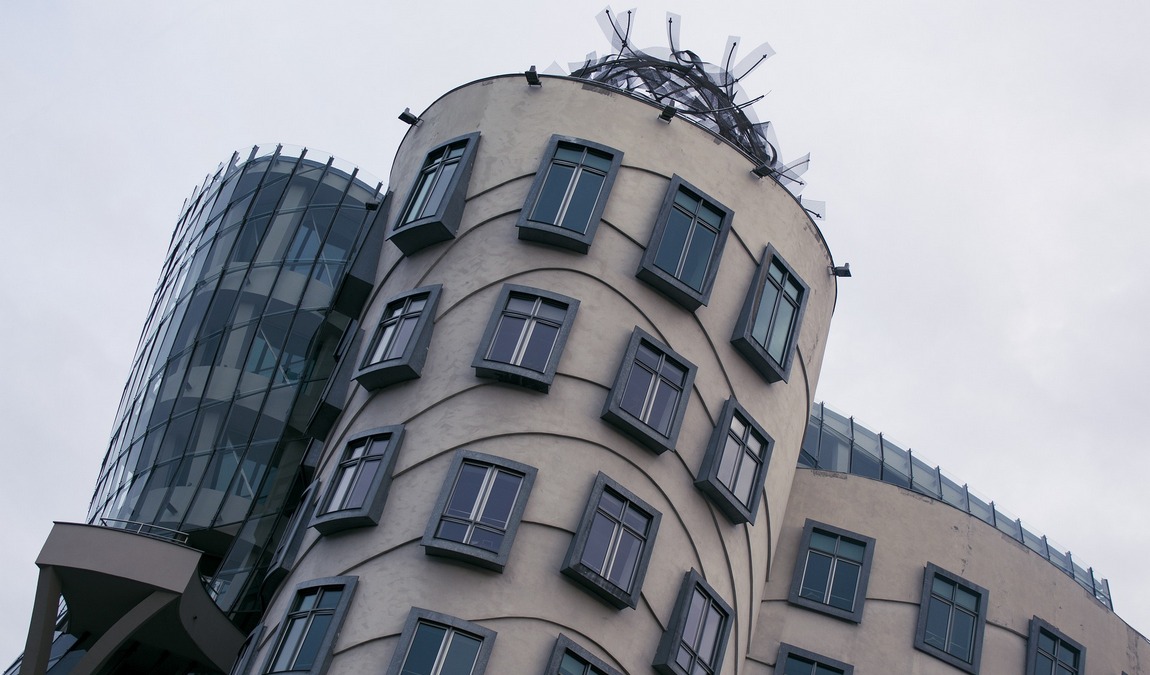 Photo: pixabay.com
Photo: pixabay.com
Visiting the iconic Dancing House in Prague can be a memorable experience for families, especially those with children. Timing is key to ensuring an enjoyable visit.
With Kids:
- Early mornings during weekdays are recommended. It is usually when the attraction is less crowded, and younger children tend to be more alert and responsive.
- Avoid rush hours, such as weekday mornings when locals head to work or evenings when they return home.
Days to Consider:
- Mid-week days, like Tuesday to Thursday, tend to be quieter compared to the hustle and bustle of Mondays and the crowded weekends.
Time of Day:
- Golden hour, which is shortly after sunrise or just before sunset, offers soft lighting for beautiful family photos.
Here’s a quick view of the Dancing House timings for families:
| Day of the Week | Suggested Visit Time |
|---|---|
| Mon-Wed | 8 AM - 10 AM |
| Thu | 8 AM - 10 AM |
| Fri-Sun | Avoid (if possible) |
Note: While weekends might be tempting, they are also the busiest. If families choose to visit on a weekend, early morning or afternoon is advised.
Lastly, remember that the Dancing House offers stunning views of the city for a more leisurely visit with children, so don't forget to take them to the top for a visual treat. Consider visiting spots like the top-floor restaurant for a family-friendly meal with a view.
How Long Does It Take to Attend?
When planning a visit to the iconic Dancing House in Prague, families want to make the most of their time while ensuring their little ones stay engaged. The duration of a visit to this architectural wonder is contingent on the depth of exploration the family wishes to undertake.
Quick Visit:
- A brief stop could take as little as 15 to 30 minutes for families on the go.
- It allows for a few snapshots of the building's remarkable exterior, likened to a dancing couple.
Full Experience:
- To fully appreciate the Dancing House, including interior attractions, allocate 1 to 2 hours.
- Interior highlights include an art gallery whose admission time can be checked on the official Dancing House gallery webpage.
- Families might enjoy refreshments at the venue's café or restaurant with sweeping views, which can extend the visit duration.
Tips for Families:
- Best time to visit: Late afternoon, allowing a picturesque sunset to backdrop family photos.
- Accessibility: The building is stroller-friendly, ensuring a leisurely visit with young children.
Ultimately, families should consider their schedules and children's needs when deciding how long to spend at the Dancing House. Whether it’s a swift glance or a leisurely exploration, the Dancing House offers a unique experience, etching lasting memories for all.
Is Dancing House in Prague Worth Visiting?
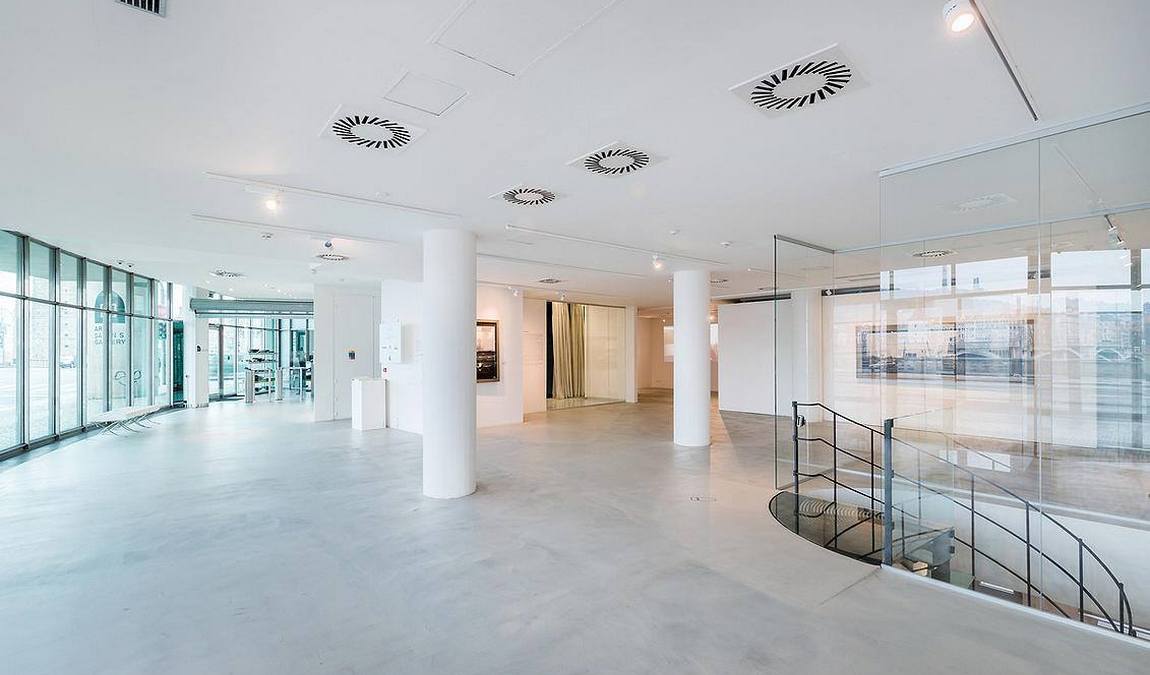 Photo: facebook.com/galerietancicidum
Photo: facebook.com/galerietancicidum
When traveling with family through the heart of Europe, Prague's architectural splendor offers a feast for the eyes, with the Dancing House being no exception to the city's aesthetic. This modern gem stands out amongst the traditional Baroque and Gothic buildings, symbolizing a dancing couple and adding a contemporary twist to the Prague skyline. This building has become a significant tourist attraction in Prague.
Reasons to visit Dancing House:
- Accessibility: Easy to reach, the Dancing House is a perfect quick stop on your city tour.
- Photography: Iconic photo opportunities await, providing memorable snapshots.
- Education: A talking point about modern architecture and design.
The structure is fun and intriguing and provides an educational glimpse into deconstructivist architecture that even the kids will find fascinating. A viewing terrace offers a spectacular overview of Prague, and the external façade will ignite everyone's imagination.
Additionally, the building hosts a top-floor restaurant where families can enjoy stunning city views. The Dancing House is not just an architectural wonder but also a place where families can relax and dine with a vista.
The Dancing House in Prague is worth visiting for its unique design, photo-worthy moments, educational value, and family-friendly dining with a view. It's not just a building; it's an experience that speaks to all ages. Whether weaving through the historical streets or searching for something contemporarily striking, the Dancing House is a must-see destination that promises to enrich your family's travel tale in Prague. So why not add this dancing delight to your family's itinerary?


